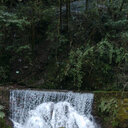Molecular characterization of manganese superoxide dismutase (MnSOD) from sterlet Acipenser ruthenus and its responses to Aeromonas hydrophila challenge and hypoxia stress.
Raktažodžiai
Santrauka
A novel gene encoding the mitochondrial manganese superoxide dismutase from sterlet Acipenser ruthenus (Ar-MnSOD) was cloned. The full-length cDNA of MnSOD was of 1040 bp with a 672 bp open reading frame encoding 224 amino acids and the deduced amino acid sequence was located in mitochondria. Sequence comparison analysis showed that Ar-MnSOD was highly similar to MnSODs of invertebrates and vertebrates, especially those of freshwater Cyprinidae fishes and mammals. Phylogenetic analysis revealed that Ar-MnSOD was distant from MnSODs of other fishes and belonged to the family of mitochondrial MnSODs (mMnSOD). Consistently, Ar-MnSOD was located in mitochondria. The 3D structure of Ar-MnSOD was predicted and the overall structure was similar to that of MnSODs of humans and the bay scallop Argopecten irradians. In addition, mRNA of Ar-MnSOD was detected to extensively express in all tissues, with the highest level in brain and liver. Spleen and head kidney inoculation of Aeromonas hydrophila led to a significant up-regulation of Ar-MnSOD transcript levels. Also, hypoxia induced a transient increase in transcription of Ar-MnSOD in the gills, but not in the heart and brain, suggesting metabolic depression in these vital organs. The results also implied the anti-hypoxia properties of Ar-MnSOD in the related tissues and proved that Ar-MnSOD was involved in the stress response and (anti) oxidative processes triggered by hypoxia. The results indicated that Ar-MnSOD is induced upon A. hydrophila infection and hypoxia, consistent with its role in host immune and stress-induced anti-oxidative responses.



